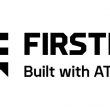APCO: EFJohnson announces multisite P25 system
BALTIMORE–EFJohnson today introduced multisite capability to its Trunked IP25 Infrastructure System featuring a fully distributive architecture that is designed to increase reliability and lower costs for first-responder agencies.
Being demonstrated for the first time the annual Association of Public-Safety Communications Officials (APCO) conference, the EFJohnson Project 25-compliant infrastructure system is the first mission-critical infrastructure system designed from the beginning to work in an IP environment, said David Lukeson, EFJohnson’s senior product manager for infrastructure.
“Everybody else kind of adapted their existing infrastructure, which is not distributed, to an IP format,” Lukeson said. “We began with both the IP format and the distributed architecture at the same time.”
EFJohnson’s architecture allows peer-to-peer call setup, avoiding conflicts encountered in typical hierarchical systems and eliminating the central control device that can act as a single point of failure, Lukeson said.
And the way the EFJohnson system uses multicast in a manner that does not unnecessarily stress an operator’s bandwidth capacity when talk groups include users from multiple sites, said Jeff Benshetler, EFJohnson’s manager of infrastructure development.
“Alternatives use a point-to-point protocol where, as additional sites participate in the call, the backhaul bandwidth for the sites increases. In our example, to have a call that includes three voice stream,” Benshetler said. “In our architecture, there’s only a single voice stream required on the backhaul. That saves the customer money and it makes it possible to put higher density sites in places where high-bandwidth backhaul is not available.
“As the number of sites on the wide-area call increases, the advantages of our architecture increase.”
Another advantage of the distributed architecture is that failure of the site originating a call does not collapse the talk group. While a site failure means no communication with that particular site, other sites being used in the talk group can continue to communicate.
Similar resiliency is realized when the backhaul system fails, as was the case in many areas amid flooding in the wake of Hurricane Katrina. Without backhaul, alternative systems are unable to provide communications, even if the RF portion of the site is functional. With the EFJohnson system, a hardened site can provide communications within its coverage area when backhaul failures prevent communications with other sites in the network.
“Really, the vulnerability in a wide-area system is not individual sites in an emergency situation, it is the backhaul,” Benshetler said. “The infrastructure is certainly the most vulnerable—Katrina showed that, where you lost all of your telephone lines and you lost all your Internet connections.”
Although there is intelligence at each site and no central control switch, the EFJohnson IP25 multisite system will not be unruly for network administrators, Benshetler said.
“Our NMS [network management system] is particularly easy to use,” he said. “If you can buy a book on amazon.com, you can operate our NMS.”
Scheduled to be generally available during the second quarter of 2008, the EFJohnson multisite system offers compelling value to customers, Benshetler said.
“We are price competitive for just buying the infrastructure with our competitors. We have price advantage as we get to multisite, because the additional options you need to buy from competitors in order to operate multisite, while our growth into multisite is not nearly so expensive.”
Attendees of the APCO conference can view a demonstration of the system at EFJohnson’s booth, #2700. In addition, the solution also will be featured as part of the Cisco Systems exhibit.

















